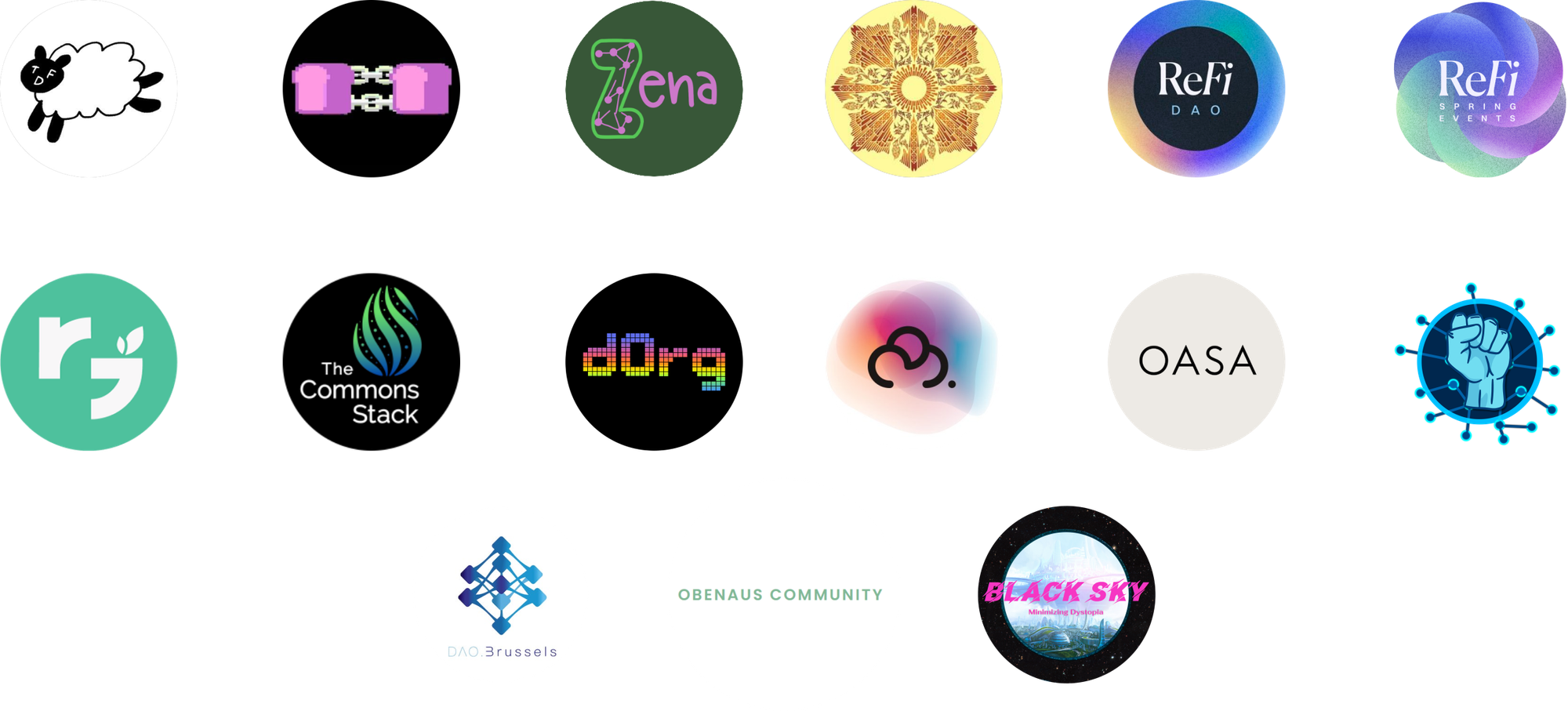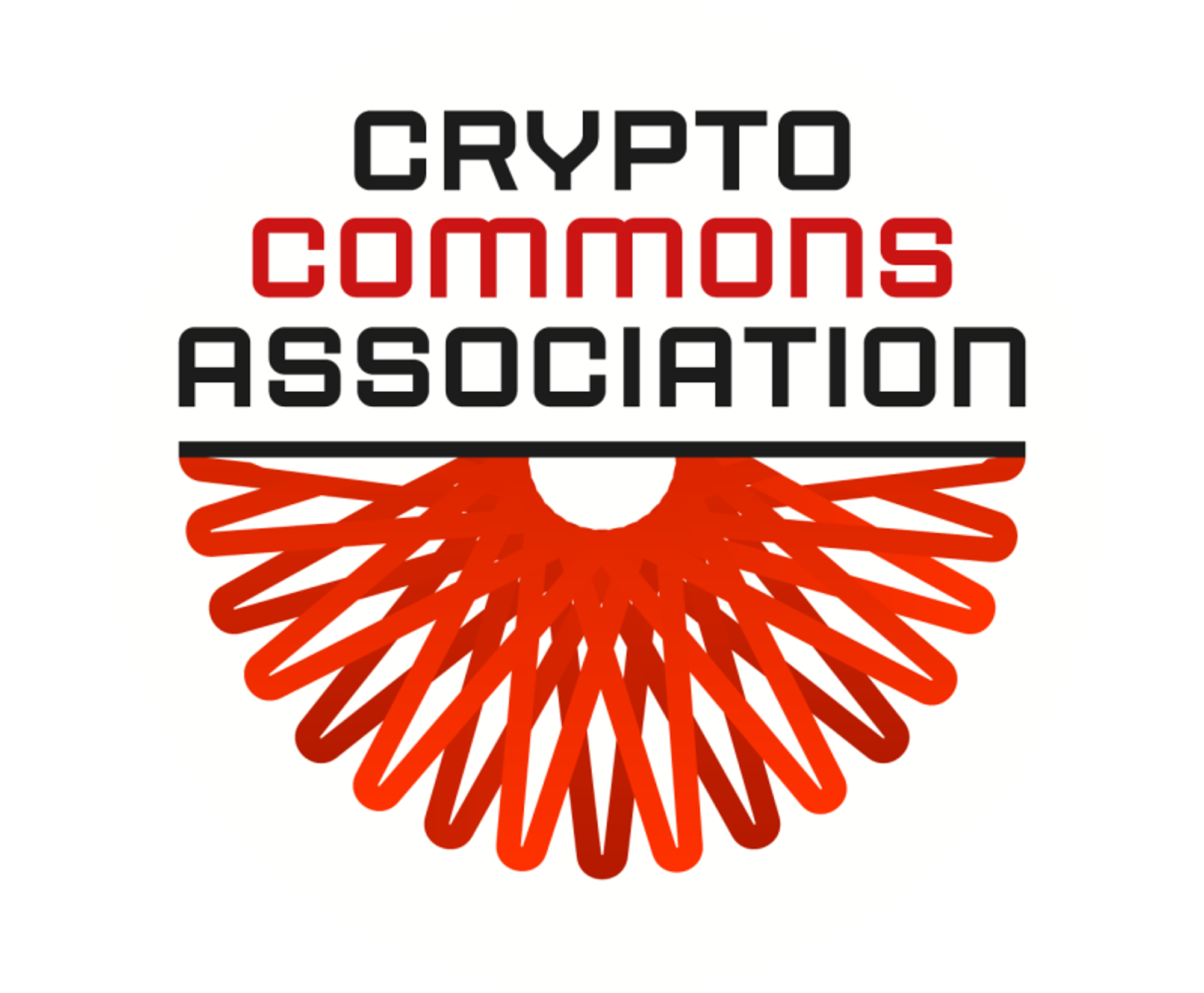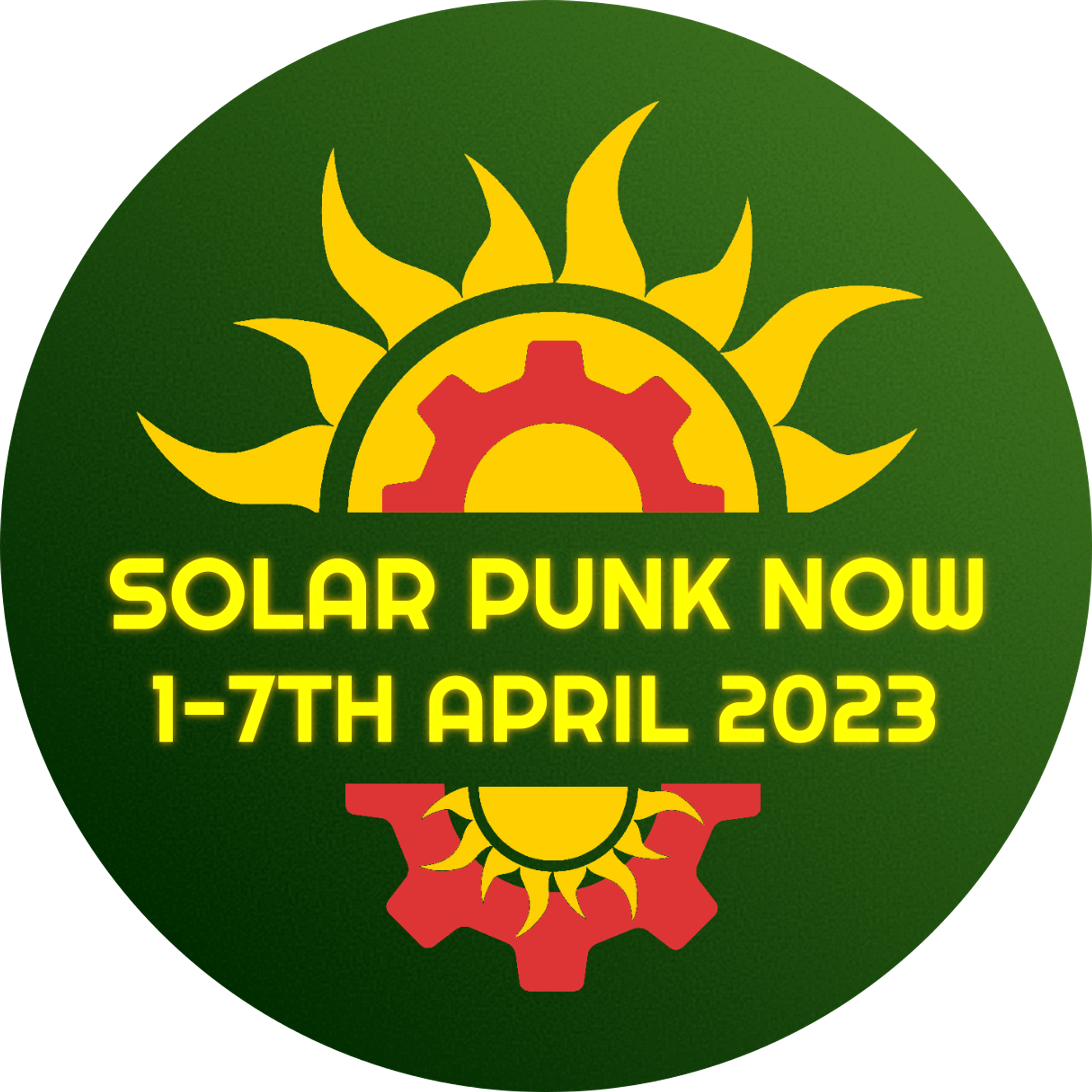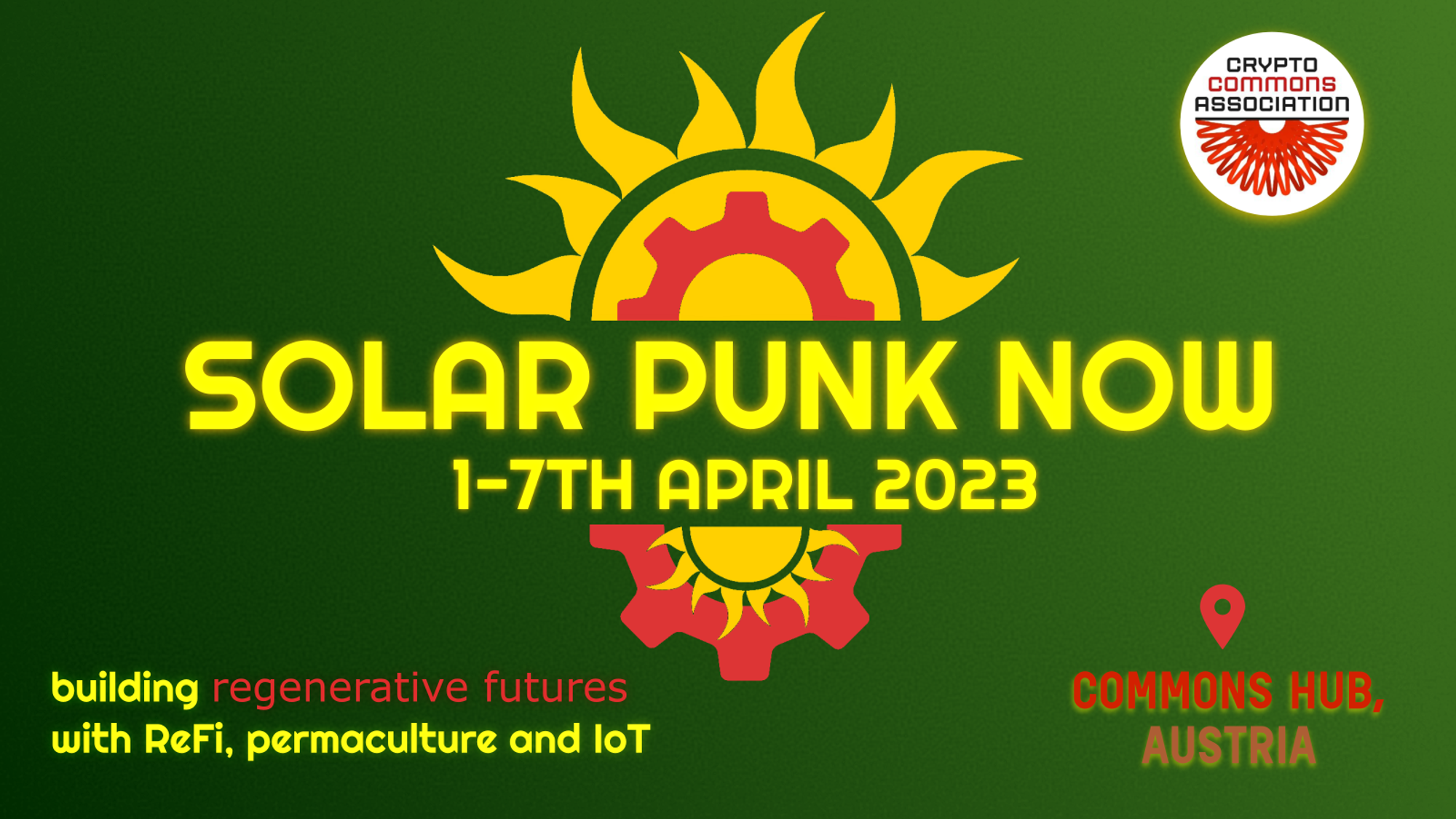Solar Punk NOW is over, but it will be back!
01/04/2023 → 07/04/2023
Solar Punk NOW is a gathering exploring regenerative futures with ReFi, Permaculture and IoT. Inspiring talks, debates and workshops; liberating structures, productive chaos and emerging order, morning meditations, hot & cold baths in stunning nature; late-night fires & dances, crazes, frenzies, laughing fits and making new friendships.
OpenCollective page

“Gathered at the Commons Hub (in Reichenau an der Rax, Austria) representatives of more than twenty organizations took turns in activities such as panels, open discussion sessions, and walks through the Austrian Alps.
While it is common at crypto events to meet a bunch of crypto-enthusiasts highlighting the best attributes of blockchain technology, it was very interesting to see an event where the application of blockchain technology to planetary challenges (economy, regeneration, social justice, etc.) happens from the perspective of people with different backgrounds.
Thanks to our participants Marcelo and Fotis for writing a recap article of the event!

In addition to the geographic diversity, covering from New Zealand to Venezuela, passing through India, Brazil, and several European countries, the fact that the participants arrived with cultural and organizational luggage meant that each feedback and each tension generated a rich load of knowledge.
New and old faces
Each event participant brought with them the frustrations and victories of the projects to which they contributed, the encounter between these different backgrounds characterized the first hours of the event when people were still meeting.
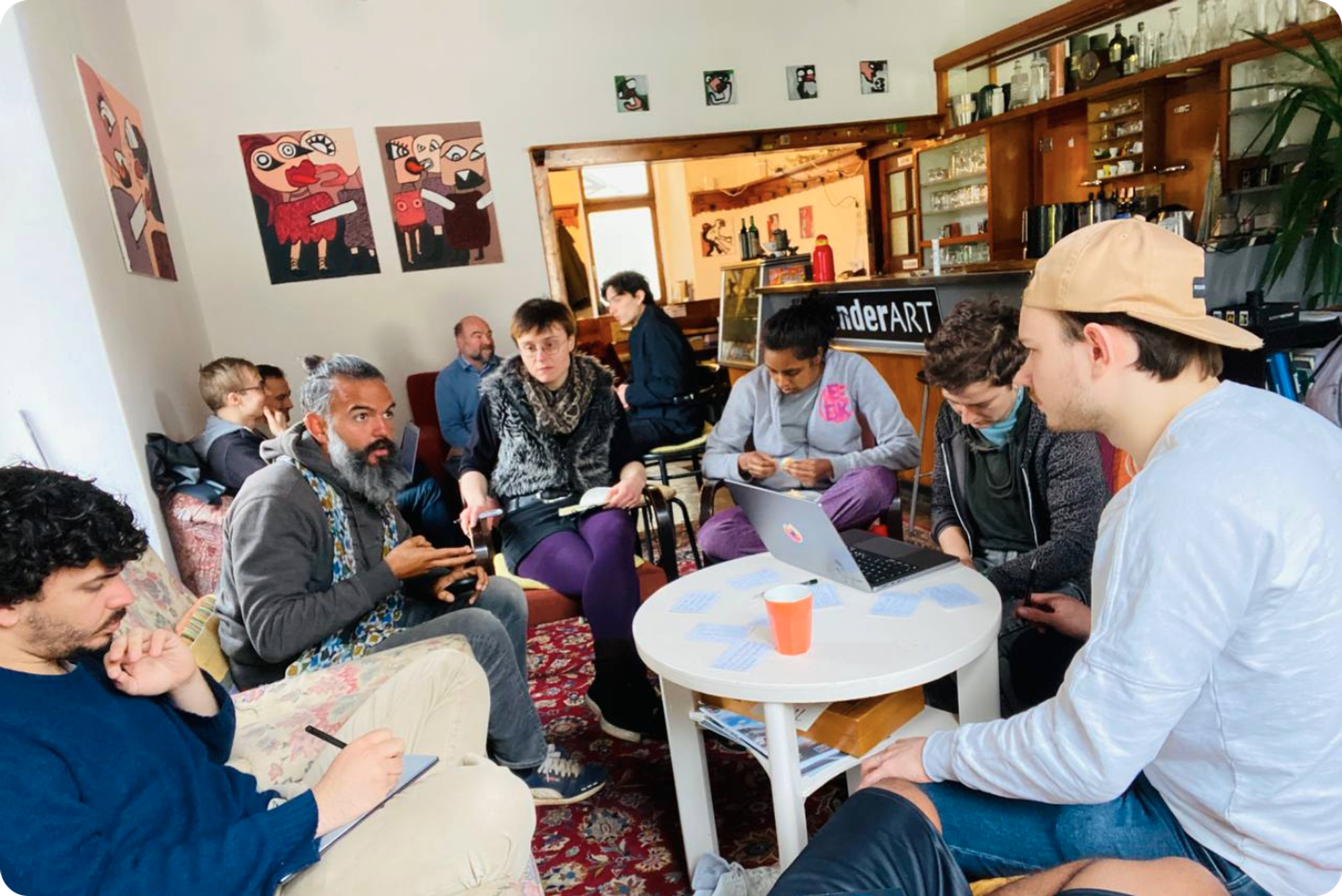
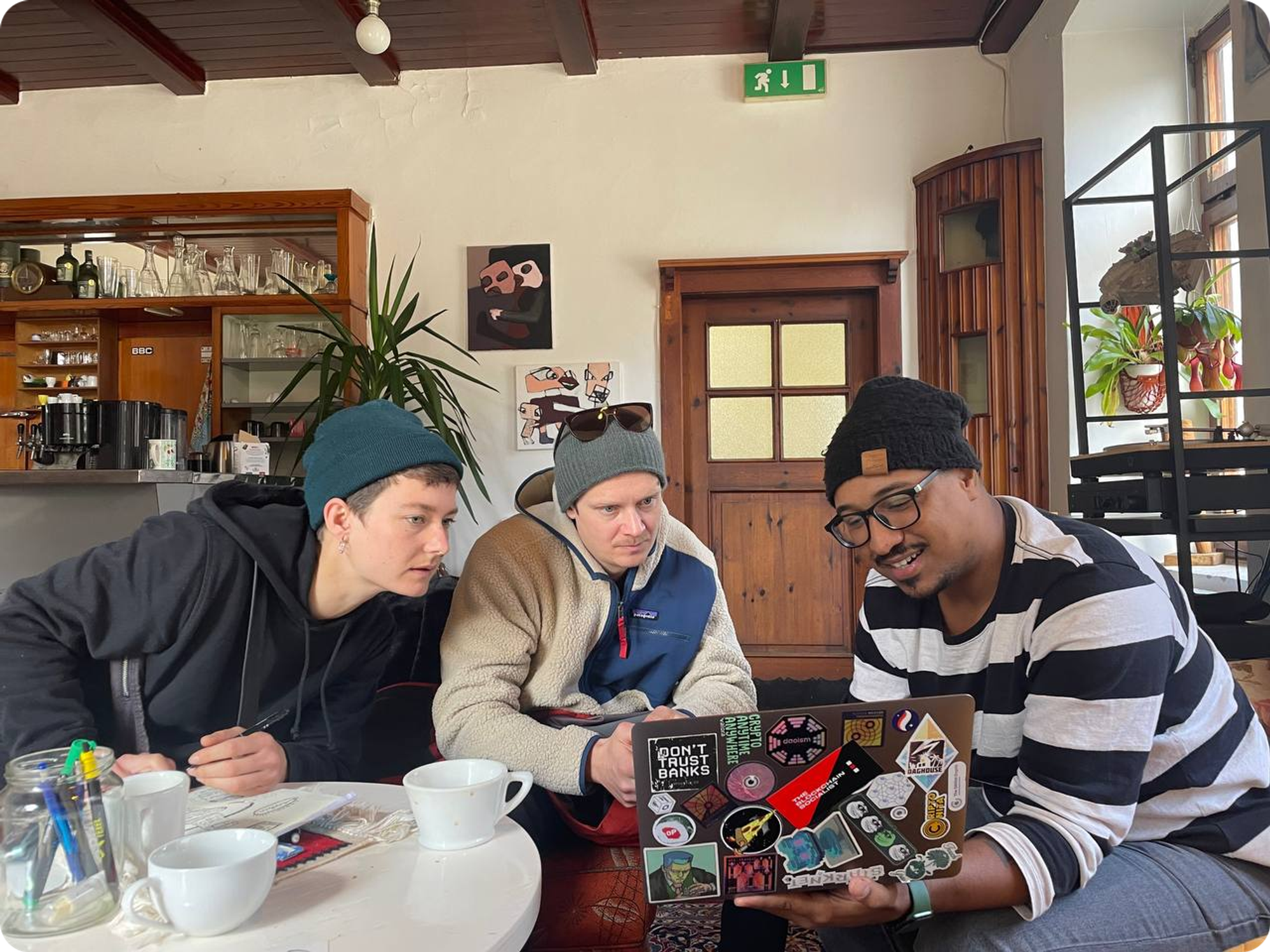
While learning each other's rhythms and how to respect them without repressing themselves, it was very cute to see how the first interactions helped to shape part of the dynamics that characterized the event for the eight days.
The team of facilitators who attended the event were something special in terms of efficiency and care. Either by accident or by a superior level of social engineering, all transitions between activities happened organically, and this fact implies the affirmation of Giulio's efficiency as a Shepherd that ensured that everyone knew what was happening.
What is Solarpunk?

In the context of the Solar Punk movement, the first series of discussions was marked by an attempt to define priorities and boundaries. However, before exploring the event content, we need to know what solar punk is. Solarpunk is an emerging artistic and cultural movement that envisions a positive future where humanity thrives in harmony with nature and technology.
It is a response to the dystopian, apocalyptic visions that dominate much of science fiction and futurism, instead imagining a future world that is sustainable, and equitable. It is characterized by a focus on renewable energy, green spaces, community-based living, DIY initiatives and an aesthetic that incorporates natural elements and futuristic design. The movement aims to inspire hope and action towards a more equitable and environmentally conscious world.
Recently, solarpunk initiatives have expanded to include blockchain technology, envisioning regenerative futures where humanity is at its technological peak while living in harmony with nature and each other.
The first panel we attended, on carbon credits, can be used as a reference to the diversity of perspectives that were present at the event.
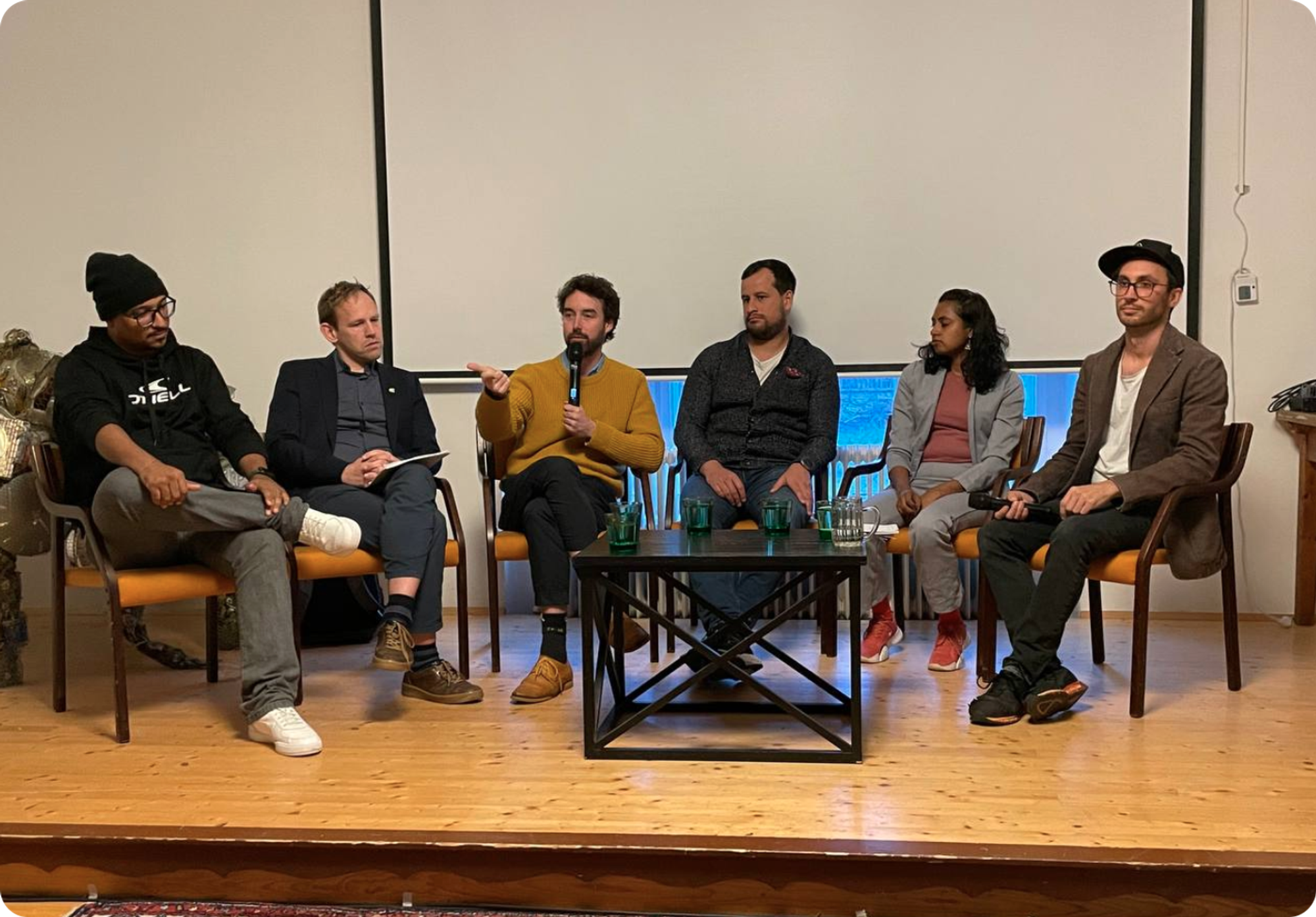
A local deputy, an entrepreneur who acts in the intersection between Web3 and the carbon market, an eco activist of Letzte Generation Österreich (austrian node of the global movement “Last Generation”) and a founder of a project related to regeneration credits, myself representing the intersection between grassroots initiatives and the ReFi Ecosystem, and a local activist, answered questions from the mediator.
We can summarize the content of this first phase of the conference in a kind of consensus on the need for a diverse approach and a focus on building social and financial infrastructures for Carbon Credits that avoid the problems and structural limitations of traditional centralized and profit-centered systems.

The second phase of the event was the discussions on priorities, here the discussion fluctuated between caring for the land, people and the production of efficient solutions. In each of the topics mentioned above there was a mix of tech and art, that gave the event as a whole a very specific vibe.
The third phase was the discussions about how, or more specifically, about the methods and tools that allow us to move towards post-capitalist solutions. A common thread here was the relationship between the solutions and the outside world, treated from the perspectives of the planet, agents of power (market and state) and fragile populations.
The experience
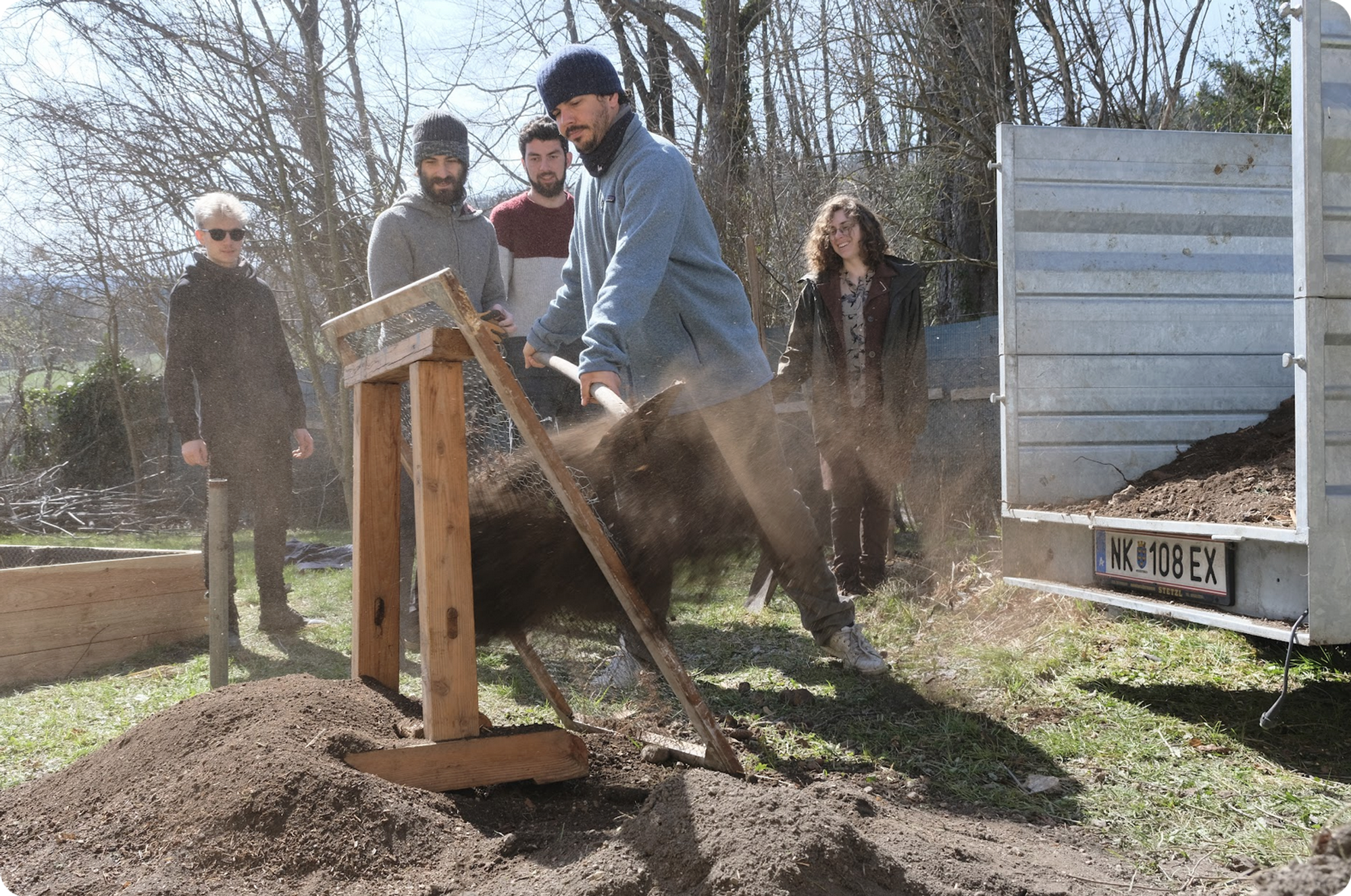
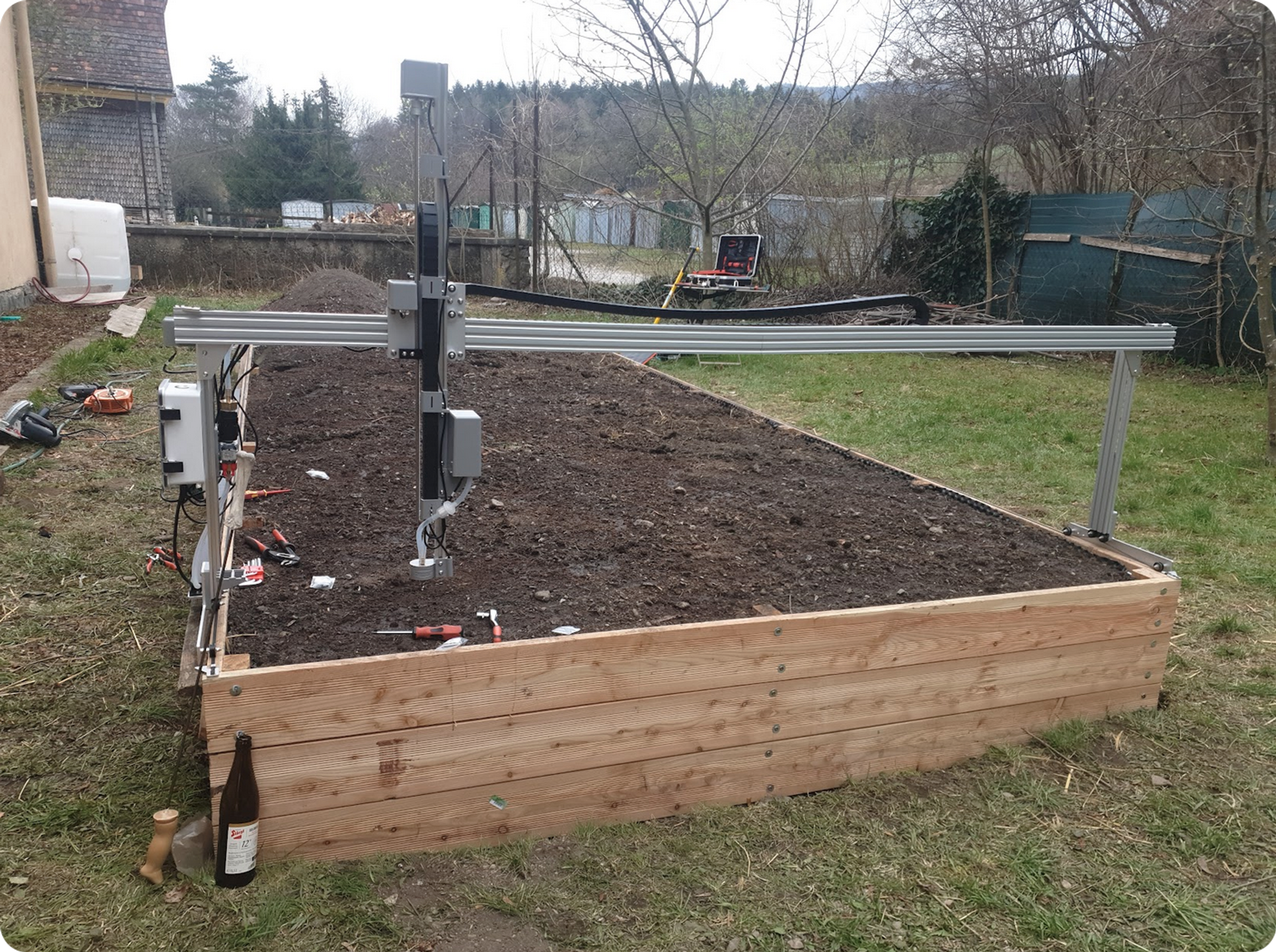


The emergent Regenerative Finance ecosystem of Ethereum is Woodstock with teeth. The Regen is the new and tooled-up upgrade of the hippie. From the 1.0 version of the 60’s psychedelic rock and acid-dropping, to the 2.0 version of early internet cyberdelia and psychedelic trance, hippies have been progressively becoming more and more adept with new technologies.

Now, we are observing a new leveling-up with access to crypto capital, to disruptive emerging technologies and to global networks of social change; let’s call it Hippie 3.0.
The Commons Hub is certainly a place for stewarding this new kind of hippie evolution and no matter how ironic, secular or skeptical some of us were, all of us present in Solarpunk Now participated in the shenanigans of this new countercultural revolution. We started each new day of the unconference by gathering in a circle and spending a good 10 minutes of guided meditation led by an experienced participant.
Some days we shared our gratitude for things in the Hub or other people’s deeds. Some others engaged in open space technology facilitation techniques for building better interpersonal wisdom and then we plunged into a highly varied mixture of sessions from tokenomic mechanism design to spirituality.
The first question we asked ourselves was something along the lines of “Do you think Solarpunk is a good thing?” and immediately what happened is that the distribution has been very biased towards the extremes. Some went to the far ends of each wall, a few were in the middle and most were spread out evenly somewhere in between. This set the stage for the discussions that ensued during the rest of the week where people had to grapple with the polarity between solarpunk and its rebellious counterpart, lunarpunk.
Lunarpunk is all about what happens in the dark of the night, where the scorching light of the sun is not there to provide full transparency and where people can choose to stay in the protective shadows of anonymity, a fundamental right that the lunarpunk thesis claims have been lost in the way.
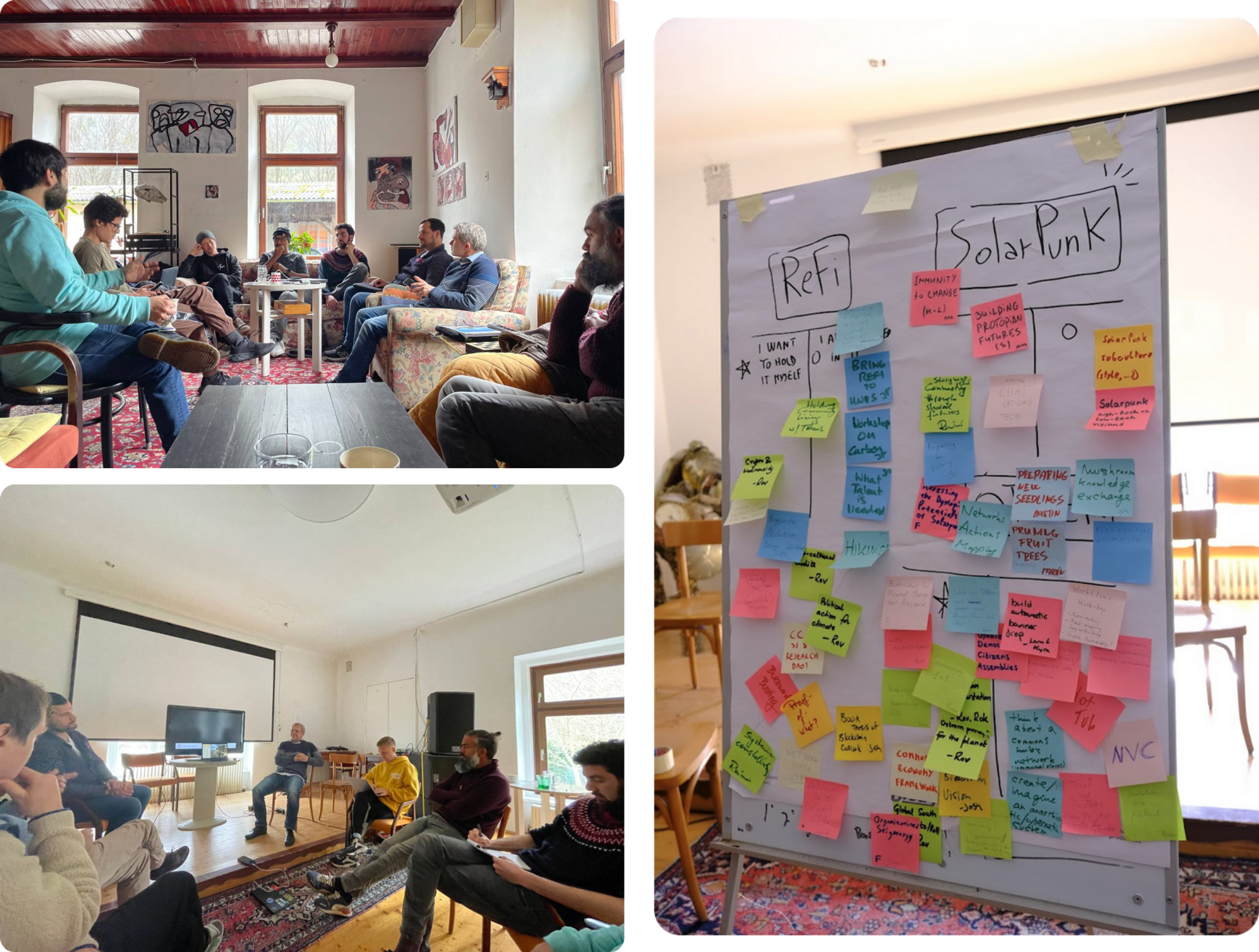
As a self-identified lunarpunk, it was very intriguing that a solarpunk event had such a big representation of criticism and opposition to its own self. But as a sympathizer to the solarpunk narrative I was simultaneously very delighted to see that critical voices were integrated into it and wished to protect it from capture or being distorted by negative forces as the surveillance infrastructure, speculative hype or it being watered down versions with less radicality.
The week’s lunarpunk session started off by watching Rose O’Leary’s Lunarpunk and the Dark Side of the Cycle on Rekt. It turned out that people outside of the session were also watching the same video at the same time without the knowledge of each other. This led to a convergence in space in terms of the unacknowledged dangers of solarpunk.

An emergent line of thinking about privacy was that a lot of people in the room started approaching it through a collective and political sense as emancipation rather than its traditional individualist sense as self-defense. We ended up by collectively deciding to move towards privacy-preserving tools of communication and towards a trust-based system of membership and vetoing people.

In the room, solarpunk and lunarpunk were finally friends and co-conspirators, opening up the space for better self-awareness and strategic thinking in how we envision the future culminating in a session on low-tech vs high-tech technological possibilities of solarpunk with a focus on agriculture.
Back to punk
During the week we had been bombarded by all kinds of punks: solarpunk, lunarpunk, cypherpunk, cyberpunks, you name it. But an interesting provocation by Felix towards the last days of the event was to also start focusing on the punk part.
What does it mean for these narratives to be punk and how do we become more punk ourselves? This nudge was followed by a whole day of blasting all kinds of punk rock while working in the fields, mosh pits, beer but also a reminder from cultural history of how punk has been captured and become a shallow shell of its former edgy self and how hardcore punk instead brought a culture of proactive action, growing out of the teenage angst and nihilism of punk.
Veganism, straight-edge, new cooperative business models and other counter-cultural movements that have today gained immense traction can all be traced historically to the booming hardcore punk scenes of the late 80s and 90s. And the solarpunk movement itself, beyond its origins in sci-fi authors such as Le Guin, might have also been inspired by the Cro-mags, Bad Faith and Earth Crisis.
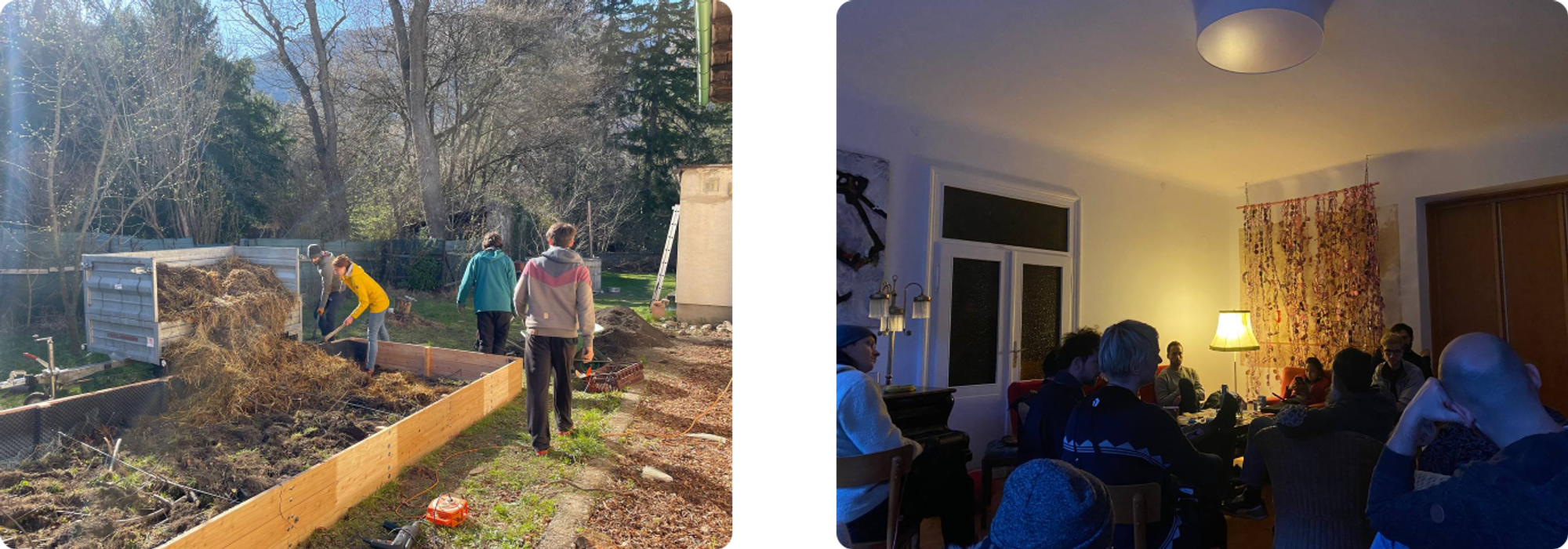
The optimistic worldview, the rigid adherence to moral principles, the respect towards ecology and animal lives and the conviction that change can come through alternative systems and infrastructures are as much part of the current ethereum-centered culture of solarpunk as much as the new york hardcore scene of the 90s.
At the same time, the often militant nature of straight-edge hardcore, the culture of staying underground and building diy solutions is very reminiscent of lunarpunk. The last days were a reconciliation with the fact that, no matter what kind of punk you are, you should never forget your cultural roots.”
-Written by Marcelo and Fotis

Participating projects
